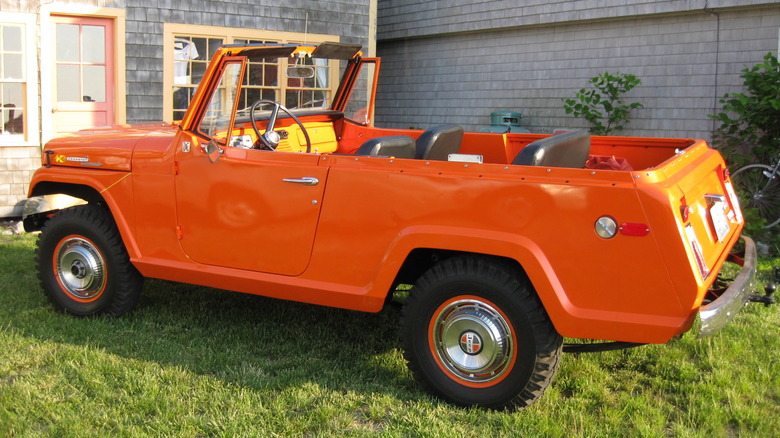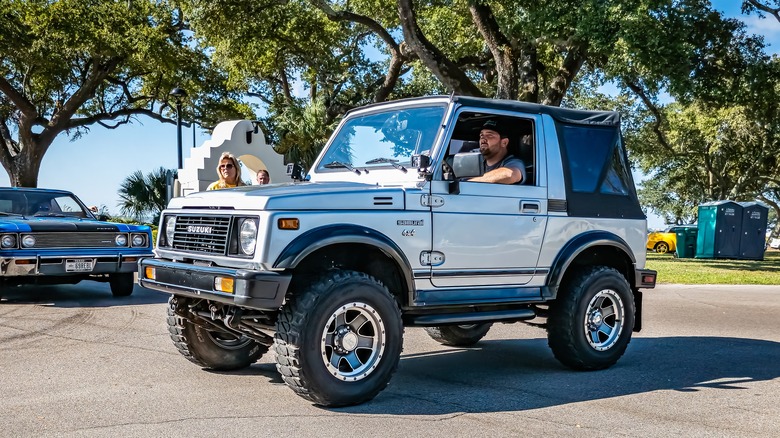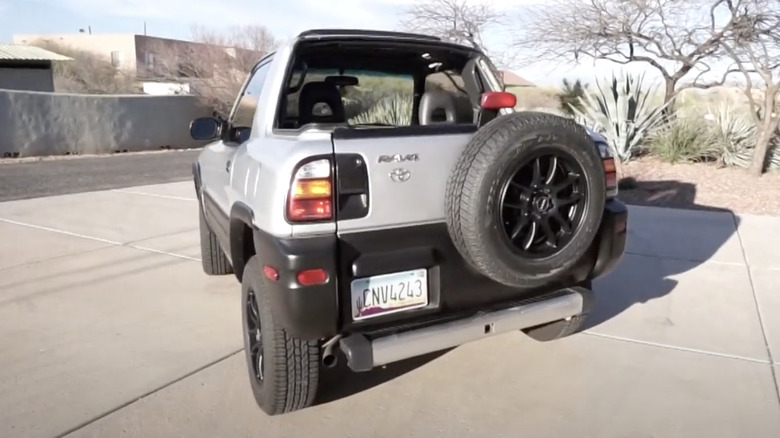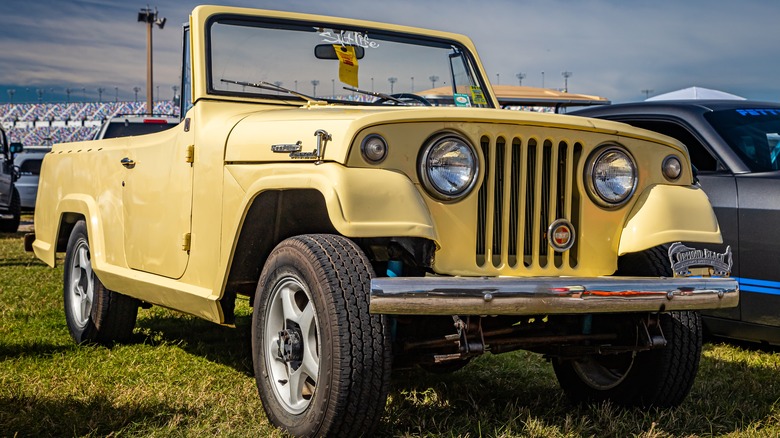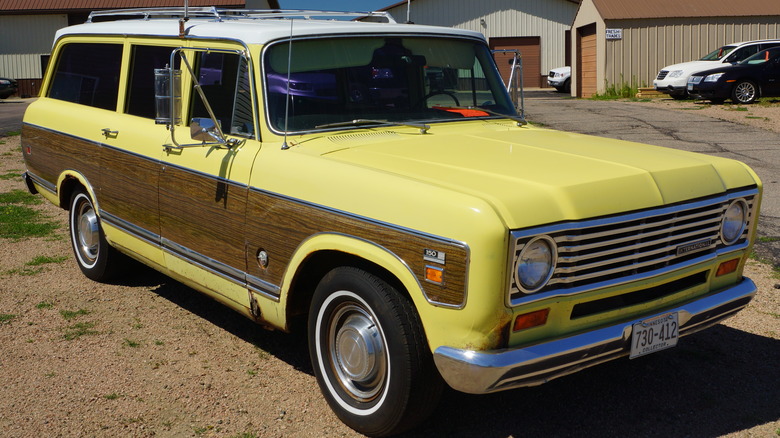4 Discontinued SUVs We'd Like To See Make A Comeback
For much of the 20th Century, the station wagon was the preferred mode of transportation for American families. Station wagons were so prevalent that they became stars on TV and in movies, but the appearance of the Dodge Caravan and Plymouth Voyager in 1983 started the transition to minivans. In 2020, Chrysler axed the Grand Caravan since, by that point, the SUV had become the flavor of the day. SUVs were certainly not new to the scene; the Chevy Suburban was then sitting on the cusp of its 12th generation.
That model's debut in 1935 and continued presence on Chevy dealership lots make the Suburban the longest-running nameplate in automotive history. In its 90-year lifespan, the Suburban has seen many other SUVs come and go from other automakers' lineups, but there is a sizable selection from that bunch that we think are worthy of resurrection.
[Featured image by Seduisant via Wikimedia Commons|Cropped and scaled|CC-BY SA 3.0]
Consumer Reports killed the Suzuki Samurai
When Suzuki brought the Jimny to the United States as the Samurai late in 1985 as a 1986 model, it had already been popular in Japan for well over a decade. Its base price of $6,550 (only about $19,000 today) and fun factor made it popular right away. Suzuki sold 47,000 in the United States in its first year, making this the most successful debut for any Japanese model to that point.
Suspension changes softened the Samurai's ride during a mid-year 1988 update, but by the end of the year, changes in the yen's value in relationship to the dollar added almost $2,000 to the Samurai's stateside cost. Despite that jump, it was a Consumer Reports "unacceptable" rating that ultimately doomed the Samurai. That label was applied after some questionable testing, and the National Highway Transportation Safety Administration declined to recall the Samurai.
The damage to the Samurai's reputation was done, though, and an out-of-court settlement for Suzuki didn't come until 2004. The Samurai had disappeared from U.S. dealer lots after the 1995 model year, but the Jimny is still in production around the world. That should make it easy for Suzuki to bring the Samurai back, although the badge is forever tarnished. A new name might help, and the market should welcome a fuel-efficient, open-top off-roader to compete with the 2024 Jeep Wrangler.
Toyota briefly made an open-air RAV4
The Toyota RAV4 was the top-selling SUV in the United States in 2023, a spot it held again in 2024 with almost 250,000 sold as of mid-July, according to Kelley Blue Book. The compact SUV first appeared on Toyota designers' drawing boards in the mid-'80s and debuted as a concept at the 1989 Tokyo Motor Show. A refreshed concept was exhibited again in 1993, and the production RAV4 was introduced in Japan and the United Kingdom the following year.
The RAV4 came to the U.S. in 1996, and in 1998, Toyota released a soft-top version of the RAV4 that allowed the rear passengers to ride al fresco. The driver and front-seat passenger had to settle for a modest flip-up sunroof, and the soft top was somewhat inelegant and only offered through 2000. With the model's enduring popularity and a lack of open-air SUVs on the current market, we'd certainly welcome a return of the open-air RAV4. Should Toyota see fit to extend the canvas covering to the front seats, we'd be even happier. The industry giant now has three RAV4 models from which to work: the gas-powered version, the RAV4 Hybrid — a mild hybrid — and the plug-in hybrid RAV4 Prime.
The Jeep Commando wasn't around for long either
Long before the Samurai and open-air RAV4 came and went, there was the Jeepster (later simply Jeep) Commando. In the mid-'60s, the International Scout and Ford Bronco had emerged as rough-and-tumble four-wheel drive SUVs and were taking bites out of Jeep's market share. At that point, Jeep was under the Kaiser umbrella, and that company crafted the Jeepster Commando and introduced it in 1967. It was available as a pickup, roadster, or wagon, with the key difference being the top configuration. All three could be driven with the tops removed, making the Commando a fair-weather favorite.
American Motors bought Kaiser-Jeep in 1970. In 1972, the Jeepster Commando became the Jeep Commando. AMC engines replaced the older "Dauntless" V6 and obsolete F-head four-cylinder, and the front end was redesigned. The next year was the last for the Commando, with the Cherokee and CJ7 taking up the slack beginning in 1974 and 1976, respectively.
Commando fans can hold out hope thanks to Jeep's precedent for bringing back retired nameplates. The Gladiator badge first appeared on a pickup truck in 1963, when Jeep was the property of Willys-Overland. It stayed in use until 1971, when Jeep's trucks became known as the J series. The Gladiator nameplate stayed on the shelf until 2020 through several ownership changes for the Jeep brand and now adorns Jeep's newest pickup truck.
The International Travelall was a family-friendly workhorse
As we mentioned above, the International Scout was part of the early SUV wave that formed in the 1960s. The Scouts lived in various forms from 1960 through 1980, when International's financial woes forced it to shut down Scout II production. Volkswagen now owns the Scout name and will unveil its plans for the new Scout next month. International made the larger Travelall from 1953 through 1975, and that model would be another welcome member of the revived International line should Volkswagen and its new partner Rivian go that route.
International was ahead of the SUV game with the Travelall in particular, marketing it to upscale suburban families to use as weekend errand runners and family haulers. The demand for refined, full-sized SUVs is high these days. According to Good Car Bad Car, four such models have sold more than 20,000 units in the U.S. in the second quarter of 2024: The Chevrolet Tahoe, Ford Expedition, GMC Yukon, and Toyota Grand Highlander.
[Featured image by Greg Gjerdingen via Wikimedia Commons|Cropped and scaled|CC-BY SA 2.0]
